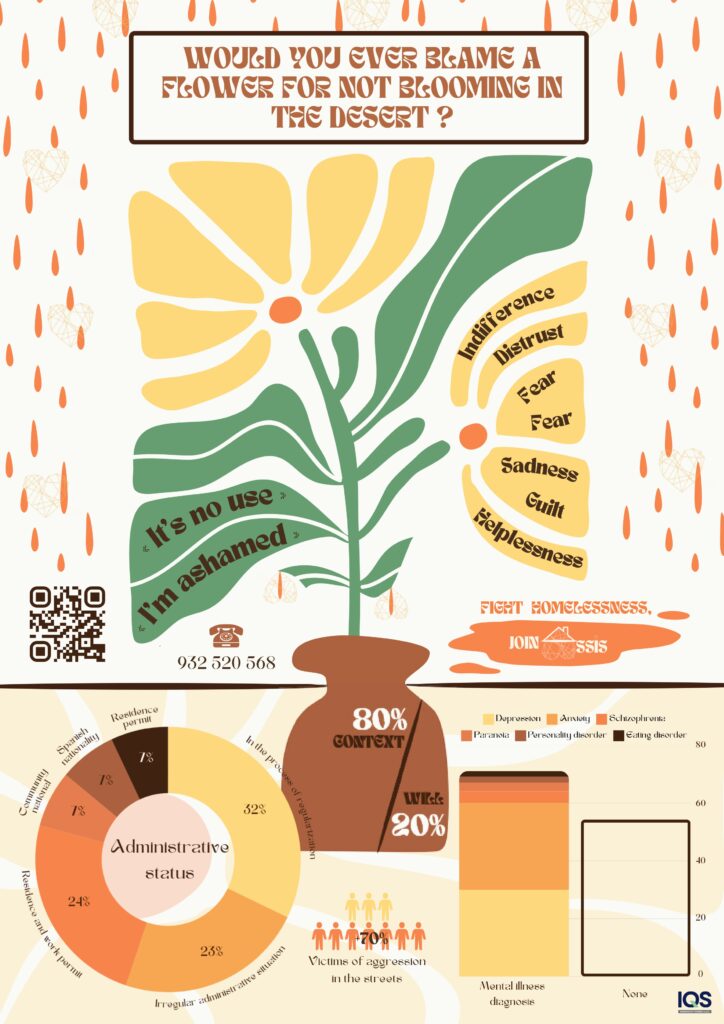IQS-URL students recently carried out a service learning experience in which they analysed a survey that ASSÍS, an entity dedicated to caring for the homeless, had carried out among users.
IQS Students Learn About the Reality of Homelessness Through a Service Learning Experience with ASSÍS

Specifically, 55 students in the “Data Science for Business” subject in the 4th year of the Bachelor’s Degree in Business Administration and Management put into practice the knowledge they have acquired in the classroom on data analysis and visualization with the statistical software R. They were able to uncover and work on socially sensitive data that are often not part of the usual realm of knowledge for IQS students.
“The intention is to raise awareness about the phenomenon of aporophobia and for students to understand the reality and personal experience of homeless people. In addition, the social entity will benefit from this experience by obtaining a report with the analysis carried out and infographics with the most relevant elements, which will support actions to raise awareness and recruit volunteers from around the ASSÍS community,” says Dr Francesc Martori, professor of Quantitative Methods at IQS.
Among the data highlighted by the students was the revelation that 70% of the homeless people surveyed have been victims of aggression in public spaces. In addition, they found that more than 70% of this demographic is composed of individuals from other nations. Among occupational concerns, 52% of respondents stated that they were actively looking for a job. Likewise, relevant aspects related to mental health were identified, showing that more than 50% of the respondents have suffered from a psychological disorder, and within this group, 64% reported adverse experiences during their childhood. Regarding gender issues, income disparity was highlighted, noting that more than 40% of the people surveyed without an income were women.

Learning and raising awareness
The experience took place over five two-hour classroom sessions. In the first one, ASSÍS presented the entity, the reality of homelessness with which they work, and the analysis survey. Over the next three sessions, students worked on data analysis and reporting. In the last session, each working group gave a brief presentation on the infographic they had made and a colloquium was held on what they had analysed, what surprised them, and the usefulness of this type of experience within the subject, among other issues.
A jury made up of the head of service learning at IQS, technical staff from the entity, and a homeless representative chose the winning infographic, which has formed part of a communication campaign by the entity itself.
The overall assessment of the experience by the students was excellent, both in terms of the perception of learning the course contents and in gaining awareness of the social reality with which they worked.
Since IQS has had the Service Learning Office in place, which supports designing a service learning experience, 134 students and 12 professors from different bachelor’s and master’s degrees have been able to take advantage of this methodology.
ASSÍS, improving quality of life
ASSÍS is a social entity that works to improve the quality of life for homeless people, offering a space for positive relationships and helping them take an active role in their change processes.
Since 2001, they have been working to provide care, support, and guarantee coverage of basic needs, thus offering social and emotional aid. In 2016, they detected an urgent need: to incorporate a gender perspective in order to specialize their focus and meet the needs of homeless women.
This is how they started the “Women with a Home” programme, through which they offer comprehensive care to women who find themselves in this situation. Studies and figures indicate that there are more and more homeless women, although the situations that affect them are much less visible because they tend to be behind closed doors. This is called hidden homelessness.









